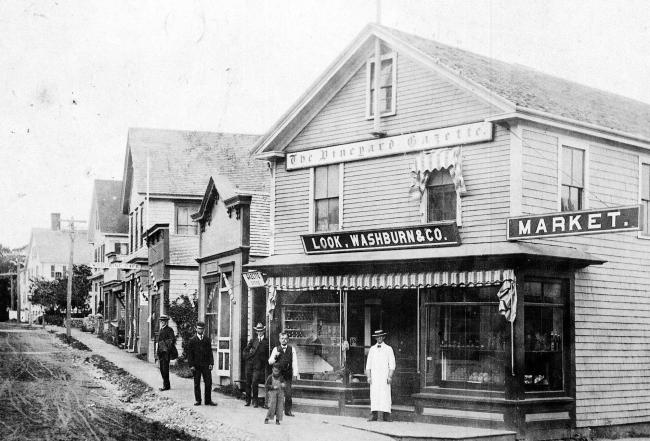This is the way the Vineyard Gazette’s new Duplex flat bed web perfecting press appears in the addition to the Gazette office which was built for it recently: The press rests upon a concrete foundation built to stand 20,000 pounds of dead weight and has a three foot pit under it. The motor driving the press is under the floor in the pit, on the side of the machine which does not show in the illustration.
The roll of paper which feeds into the press may be seen at the bottom on the extreme right. The paper is fed into the press at a uniform speed, but during the period of printing, that portion of the paper web which is to receive the impression remains stationary. This is necessary because the type forms are held in stationary beds over which the impression cylinders are continually moving back and forth. In order that the paper may remain stationary while receiving the impression and still be fed at a continuously even speed into the press and delivered at a continuously even speed into the folder, it is necessary to have a device to take up the slack that would otherwise accumulate between tho feeding-in roller and the lower forms and between the upper forms and the drawing-out roller. The mechanism for taking care of this slack is an equalizing device which is one of the essential principles of this type of press.
This is the only known method of printing from a roll of paper using flat plates or type and delivering folded newspapers from a continuouely operated folder.
From the paper roll at the right, the web of paper is led the entire length of the press and back to the folder which appears in the illusration just above the roll. At the left of the illustration may be seen the two ink fountains, one above and ono below; and the two beds of the prime, upper and lower, with their respective impression cylinder and rollers through which the paper web runs.
Without this type of press a newspaper must be printed on a cylinder press on sheets cut to size and fed to the press by hand or by means of an automatic feeder. This means passing the sheets through the press a second time to print the reverse side, and the subsequent folding of the sheets either by hand or by special folding machine. The only other alternative is rotary press using curved stereotype plates, designed for large circulations in the daily newspaper field.






Comments